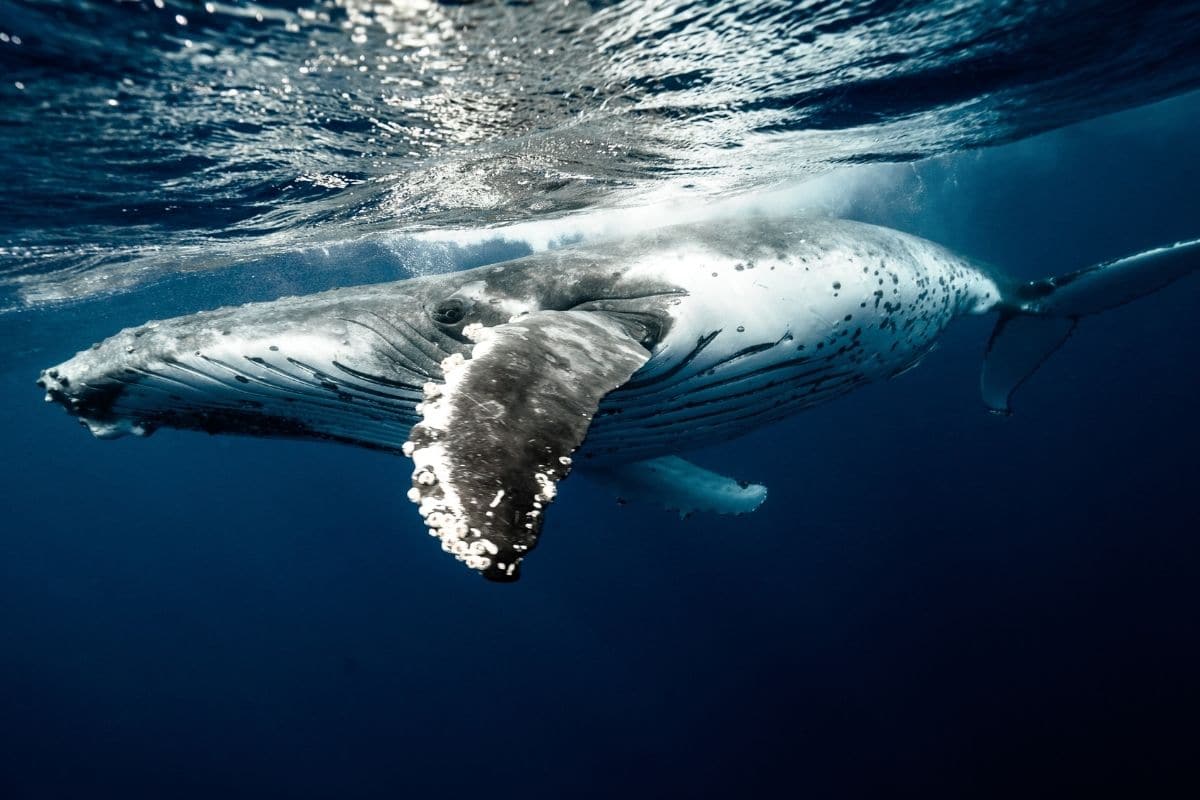
When baleen whales eat krill, a wave of seawater naturally comes with it. But now researchers have deciphered how the animal prevents all that water from getting into its lungs.
Ever wondered how baleen whales don’t drown when they open their mouths underwater and suck in a cloud of krill? These animals are capable of transporting hundreds of pounds of krill to the stomach in less than a minute. However, you would think that if so much seawater under pressure flows into their mouths, it would wash backwards into the lungs. Still, you’ve probably never seen a coughing and gasping whale. And researchers now think they know why.
dinner time
It is thought that the pressure of all the water entering the throats of baleen whales at mealtime must be immense. The question is therefore how this group of animals – which includes the humpback and blue whales – prevents their lungs from suddenly being flooded with seawater. “We are now well aware of the anatomy of toothed whales (such as dolphins, porpoises, orcas and sperm whales) and their mechanisms to prevent drowning,” said researcher Kelsey Gil in conversation with researcher Kelsey Gil. Scientias.nl. “Based on that, some people have argued that baleen whales probably have similar mechanisms. However, there are huge differences between the anatomy of toothed whales and baleen whales. And so the question of how baleen whales avoid drowning or suffocation is a very interesting and important one; we had a lot of discussions about it.”
Study
It is not surprising that little is known about this. Beached and deceased specimens are often used in research into the anatomy of whales. However, this is a battle against the clock. Because the researchers have to work quickly and complete their research before the tide comes in. In the current study, the researchers used whales obtained during a commercial whaling operation around Iceland. “It’s very important for us to understand the mechanisms and adaptations that allow baleen whales to eat the way they do,” Gil says. “This can then also give us more insight into how they got so big. Plus, it’s a bit of an overlooked topic. A lot of research has been done on how whales capture prey, but not so much on the swallowing part that takes place after that.”
oral plug
The researchers make an interesting discovery. Because baleen whales appear to have a kind of ‘oral plug’; a fleshy bulb in their mouth that moves backwards, closing off the upper airways while eating. This plug then prevents water from entering the lungs. “It’s a bit like the human uvula that closes off our windpipe when we swallow food,” Gil says.

Illustratively shown how baleen whales breathe (top) and swallow (bottom). Image: Alex Boersma/Current Biology
It is quite remarkable that baleen whales have such an oral plug. “We’ve never seen this protective mechanism in any other animal,” Gil says. On the other hand, it also makes sense. “The way baleen whales feed is not common among mammals,” she explains. “So if baleen whales want to protect their airways, a robust mechanism is needed. Incidentally, it is very important for all animals with lungs that they protect their airways while eating. But for aquatic mammals, there is an additional challenge because they are surrounded by water.”
The researchers argue that humans have a system similar to baleen whales for swallowing food without getting anything into their lungs. We have the epiglottis and soft palate. It means that humans could probably eat underwater as well. Although we are probably not as adept at it as baleen whales.
According to the researchers, the study not only new insight into how baleen whales eat, but also into why they have grown so large. Because according to them, the oral plug plays a very important role in this. For example, whales can catch a lot of prey with every bite. This then provides enough energy that they managed to reach such an enormous size. So something that would have been impossible without the special anatomical features.
The team plans to continue research into the pharynx of baleen whales. “With the many human influences disrupting food chains, it’s good to know as much as possible about these animals to protect them and their ecosystems,” Gil says. Moreover, there is still plenty to discover, for example whether whales can cough, hiccup or burp. The researchers would prefer whales live eating and breathing, although this requires some technological progress, such as ingenious swallowable cameras. “It would be interesting to throw a small camera into a whale’s mouth while it eats to see what happens,” Gil says. “But then we would have to make sure that it is safe and biodegradable.”
Source material:
“Here’s why whales don’t drown when they gulp down food underwater” – University of British Columbia
Interview with Kelsey Gil
Image at the top of this article: Elianne Dipp via Pexels